Journalist Report – April 26th
Journalist report sol 6
We learned a lot about technology today—what it sees from its own eyes, and how it has evolved. An earlier EVA started at 8:30, in which our Engineer, HSO, and Journalist (aka the millennial EVA crew) went out to the sea of shells and surrounding areas. The Engineer wanted to test a makeshift tent to use his 3D scanner in the field—he constructed it out of a bedsheet and two sawhorses—and release the shells he’d collected earlier back into the wild. Our HSO wanted to try flying the drone out to the Monolith, largely to get better images and to better determine its location for mapping. She had two batteries, the first of which managed to get the drone temptingly close to the object of interest. To uncover more of its secrets, she tried a second flight on sport mode, having a better sense of the best trajectory. As the drone launched, however, the winds picked up. The little drone battled gusts and its power drained unpredictably fast. The weather proved too much despite our HSO’s careful piloting, and the device performed a forced landing in an anonymous spot some 600m from our perch, sending a lonely, black and white, probe-like image from its final gasps on the ground. Knowing that the winds might make it even harder to find the next day, the crew calmly tracked their bootprints all over the Martian soil in search. The HSO found the thing after about 15 minutes. (She is its mother after all.) The Journalist managed to get some lowtech footage of the Monolith on her cell phone, aimed through her binoculars, and the EVA finished with some compass readings off Galileo Road, which doubled as another test for the Engineer’s Starlink.
The wind halted any other EVAs. We sat around the table after an ad hoc lunch (tuna melts for some) and completed our sixth 100cameras module. Then our Commander unleashed his box of tricks: a collection of old electron tubes, early transistors, and integrated circuits, including ones he’s worked on, to show us how technology—and the relationship between analog and digital tools—has shifted over time, become smaller and more ornate, yet no less impressive. We’re now digesting our spaghetti, having watched an episode of Moonbase 8, hearing the wind rush over the hab’s roof vent and remind us of the hostile conditions outside.
Operations Report – April 26th
Crew 315 Operations Report 26-04-2025
SOL: 6
Name of person filing report: Michael Andrews
Non-nominal systems: Suit Charger #7, Catalytic Heater, ScienceDome Radio Charger
Notes on non-nominal systems:
· (Unresolved from yesterday) It was noted that Suit #7 wasn’t charging, but further diagnosis from the Commander has isolated the issue to the #7 charger. I was able to observe that all chargers appear to work, so more formal diagnoses are required. (Note: this one has been on here a while, but we don’t any issues with chargers anymore, so this is low priority to work.)
· (Bonus project) The catalytic heater near the exercise bike in the habitat does not work. It’s an engineering project to see if this can get properly started during this mission.
· (Unresolved from yesterday) The ScienceDome radio chargers do not work. Mission support mentioned how this is a known issue. Radios will be swapped between the two structures, and I will disassemble the charger tomorrow.
ROVERS
Spirit rover used: No
Hours: N/A
Beginning charge: N/A
Ending charge: N/A
Currently charging: No
Opportunity rover used: No
Hours: N/A
Beginning charge: N/A
Ending charge: N/A
Currently charging: No
Curiosity rover used: Yes
Hours: 314.9 hours (1.1 hours used)
Beginning charge: 100%
Ending charge: 48%
Currently charging: Yes
Perseverance rover used: Yes
Hours: 329.9 hours (1.4 hours used)
Beginning charge: 100%
Ending charge: 56%
Currently charging: No
General notes on rovers: None
Summary of Hab operations: The team took this as a day of rest, performing only one EVA and working on other projects and personal time. The 5th (of 8) 100cameras project was held, and the team made cookies and spaghetti throughout the day. We also enjoyed Commander Laude’s show-and-tell of electronic hardware over the decades and an episode of Moonbase 8.
Water Use
Time of measurements: 1930
1) Per formula: 24.51 gallons
2) Smart Home Dashboard (see notes): 23.75 gallons
Water (static tank, remaining gallons): 303.3 gallons
Static tank pipe heater: Off
Static tank heater: Off
Toilet tank emptied: No
Summary of internet: Used to complete reports, learn languages, share team photos via Google drive, researching projects
Summary of suits and radios:
· EVA 11: Suits 8, 9, 10 and Radios 1, 4, 5
Summary of GreenHab operations: Watered plants and fungal project, kept the door open for most of the day to drive down temperature. Also harvested a small amount of basil for dinner.
WATER USE: 10.0 gallons
Heater: Yes
Supplemental light: 1900-2200
Harvest: 7g of basil
Summary of ScienceDome operations: I attempted to 3D scan the sample collected from EVA #10, but had difficulties with computer storage and had to abort the activity to be attempted later tonight.
Dual split (Heat or AC, On or Off): Off
Summary of RAM operations: No notable RAM activity today besides receiving a resupply of duct tape, flour, and raisin bran cereal. I also did want to report a broken plastic clamp that cracked when I was attempting to prototype the 3D scanning shroud earlier. I have tossed it in the RAM trash, and there are still 2 metal (and more resilient) clamps in inventory.
Summary of any observatory issues: None
Summary of health and safety issues: None
Questions, concerns and requests to Mission Support: None
EVA Report – April 26th
Crew 315 EVA Report 26-04-2025
EVA # 11
Author: Michael Andrews
Purpose of EVA: We plan to accomplish several objectives on this morning’s EVA before high winds arrive in the afternoon:
· The Engineer will return shells collected from EVA #7 to the Sea of Shells.
· The Engineer will attempt to set up the en situ 3D shroud for future en situ scanning.
· The HSO will operate the drone at various destinations listed below in an attempt to photograph and measure the heading of the monolith from these destinations.
· The Engineer will take several analog compass readings of the Monolith’s location.
· The Journalist may take additional desiccated soils samples at one of the locations below.
Start time: 0840
End time: 1135
Narrative: The EVA crew departed MDRS at 0840 and took two Rovers to Sea of Shells. They stopped at the Red Peaks location that the HSO had seen on a previous EVA and took some photos. Next we traveled to the Sea of Shells to return the shell specimens from our 3D scanning project. After being there only a few minutes, we then proceeded to the Overlook for our remaining objectives.
We stopped about 0.5 kilometers north of Overlook and began to accomplish several objectives in parallel. Engineer Andrews set up Starlink and was able to assemble the 3D scanning shroud in 9 minutes, although it is susceptible to winds over 10 mph and may need weights to anchor it. He also took a manual compass heading of the Monolith’s location and captured the GPS coordinates of the rover location via smartphone. HSO Koi began her drone flight to document the Monolith.
This Overlook-adjacent spot was advantageous, as she was able to fly closer to the Monolith than before. On her first of three battery packs, she determined that reaching the Monolith would be possible with some modifications. However, on the second battery pack attempt, southerly winds provided too much drag against the drone, and it had to perform a forced landing approximately 0.6 kilometers north of our Overlook point. The team repositioned the rovers to the base of the Overlook and set out on a quick hike, spreading out and surveying the landscape for the downed drone. Fortunately, HSO Koi was able to locate the drone within 15 minutes and we returned to the rovers to proceed to our final destination.
The stop at Galileo Road was short: only taking 5 minutes to take a compass heading (which Journalist Saavedra-Buckley confirmed with a Starlink-connected smartphone) and GPS coordinates before returning to MDRS at approximately 1130.
Destination:
· Sea of Shells (and nearby Red Peaks area that HSO has taken photos of)
· Overlook
· Galileo Road (Monolith viewing location)
Coordinates (use UTM WSG 84):
· Sea of Shells: Easting: 516400, Northing: 4255250
· Overlook: Easting: 516000, Northing: 4254500
· Galileo Road: Easting: 519500, Northing: 4252200
Participants: Michael Andrews (EVA Lead and Crew Engineer), Urban Koi (HSO) and Elena Saavedra-Buckley (Crew Journalist)
Road(s) and routes per MDRS Map: Left MDRS and travel north along Cow Dung Road until Brahe Hwy. Took a left onto Brahe Hwy until the road ends, then took a right onto Copernicus Hwy. Proceeded along Copernicus Hwy until arriving at Sea of Shells. Once done at that location, headed back south along Copernicus until reaching the fork in the road to stop at Overlook. Once done at that location, traveled east along Brahe Hwy, then south along Cow Dung Road until reaching Galileo Road. Traveled east along Galileo Rd for 0.5 kilometers until reaching the final coordinate. Once done at that location, traveled west along Galileo Rd to Cow Dung Road, then south along Cow Dung Road until reaching MDRS.
Mode of travel: Rovers Perseverance and Curiosity were used to travel to the destinations above, and the EVA team will walk around each site on foot, never traveling more than 1 kilometer away from the rovers.
Supplemental Operations Report – April 26th
Date: 4/26/2025
Name of person filing report: David Steinhour
Reason for Report: Routine
Non-Nominal Systems: Crew car. Power system battery, inverters, generator. Robotic observatory. HAB outer shell. Spirit. Director trailer furnace.
Power system: "Solar: The battery bank does not hold charge when sun is down and low on the horizon. Inverter Slave 1 and 2 went offline and do not restart, which limits us to 4kW when on solar.
Main generator has been monitored for oil leaks; minor leaks observed, Moreover, generator is consuming oil because of worn piston rings. Adding oil every day is necessary. Generator is limited to 8kW, see previous reports for details. Engine governor has been replaced, and the threads of one of the governer bolts was stripped and repaired with a heli-coil insert. A new gasket was installed and no further leaks have been observed.
1) Oil, oil filter and air filter changed on 04/11/2025. Hours: 9260.2
2) Current hours – 9400.6"
Propane Readings: "Refilled 4/24
Station Tank: 81%
Director Tank: 82%
Intern Tank: 86%
Generator Tank: 75%"
Water: "Hab Static Tank – 320 gallons
GreenHab – 138 gallons
Outpost tank – 550 gallons"
Rovers: "Sojourner rover used: Yes
Hours: 213.4
Beginning Charge: 100 %
Ending Charge: 100 %
Currently Charging: No
Notes on Rovers: Spirit is not charging. Perseverance’s parking brake was successfully adjusted, but will need new brake pads soon (no more adjustment to do). Curiosity’s battery meter is occasionally lagging behind / updating slowly. Both Perseverance and Curiosity had battery maintenance on 4/24. "
Cars: "Hab Car used and why, where: To Hanksville for supplies.
Crew Car used and why, where: By crew from Grand Junction.
General notes and comments: Crew car driver’s side front ball joint is bad. Low oil pressure is most likely caused by a bad sensor (it does not change due to RPM or temperature like it should)."
Summary of Internet: Nominal
EVA suits and radios: "Suits: Suit #7 is not charging, and it appears to be a problem with the suit itself.
Comms: Nominal.
T-Echo EVA-link: Nominal"
Campus wide inspection, if action taken, what and why: Nominal
Summary of Hab Operations: Small cracks in the wall of the Hab in the loft area are allowing cold air intrusion. Static tank and pipe heaters unplugged. Thermostat setup for 60F due to warm weather.
Summary of GreenHab Operations: Nominal
Summary of SciDome Operations: Dual split is being turned on during day time for cooling.
Summary of Observatories Operations: Robotic observatory offline.
Summary of RAM Operations: Nominal
Summary of Outpost Operations: Director trailer’s furnace not turning on. Will diagnose and update.
Summary of Health and Safety Issues: Nominal
Journalist Report – April 27th
Journalist report sol 7
Each report brings more of the same nouns—rocks, drones, photos, bread, monolith—but even a day off of EVAs for the Journalist can’t prevent strange events from making their way into the report. An early EVA sent our Engineer and Commander out for another Monolith triangulation session with various compasses; beyond getting more information, they also found small Monolith-like rocks near their perch. Whether those were offerings, representations, or offspring, we’re not sure. Our Engineer went on a second EVA with our HSO in the afternoon. It was a journey in high winds during the traveling portions. The goal was to 3D scan some rocks and take photos, and once up at the Overlook things seemed to stagnate—no “new rocks,” per se, so no scanning—before becoming strange. A van of aliens parked some distance away eventually approached the crew, letting them know their back tire had been stuck in a hard-dirt divot. (This despite their rented van company being called "Escape Camper Vans.") They needed help; conveniently for simulation’s sake, the rovers weren’t enough to haul them out, so Mission Support was called and dispatched. Allegedly the van-life aliens are going to donate to the Mars Society out of gratitude for the haul—someone should keep an eye on this.
The crew Journalist finished some Terran work, set up her soil desiccation project’s lab stage, and prepared a dinner she admittedly was not confident would be good until it was complete: a simple congee with peas and corn, topped with soy-glazed Spam. (While she was worried Spam “Lite” would be inferior to regular Spam, she’s been pleasantly surprised at the dupe.) The HSO had also made our best loaf of bread yet with apples and spices.
After eating, the crew completed their sixth 100cameras module, which revealed more about the broad arcs of our lives. And, for the third day in a row since a kind but firm warning by our Commander, we’ve used a respectable amount of water and should be in the clear by the end of the mission, knock on wood.
We’re realizing that we need to start finishing projects, collecting results, executing final goals for dinners, and preparing to tear down the GreenHab.
Sol Summary – April 27th
Crew 315 Sol Summary Report 27-04-2025
Sol: 7
Summary Title: A Sol In The Life
Author’s name: Michael Andrews, Crew Engineer
Mission Status: Nominal
Sol Activity Summary:
The Phoenix team is now in the second half of their mission on Mars. I have to admit: I am quite excited that the Crew Engineer has been assigned to write the Sol Summary for Crew 315 only on sols that are prime numbers so far. And yes, I will be writing sol 11’s summary as well!
We awoke to egg cups for breakfast. I normally am not a fan of mushrooms (apologies to HSO Koi and Journalist Saavedra-Buckley who have fungi-focused research both on Earth and Mars) but Artist Gagnon found a way to prepare them in a way that even I enjoyed.
The first EVA involved Commander Laude and I taking the off-road path to Lith Canyon and climbing various ridges to get a good view of the Monolith for his project. I had never started watching
2001: A Space Odyssey” until last night after much cajoling from the crew, so I didn’t understand the significance of this object until recently. This additional compass heading would allow us to better triangulate its position and find the best location on our Martian map to approach the Monolith via HSO Kois’ drone. At the end of our EVA, we noticed that several small stone towers had been constructed along the tallest Lith Canyon ridge, which Commander Laude explained as being tributes to the main Monolith to enrich his story. Now I am a man of science and don’t believe in any of that, but I do want to claim credit for their name: Miniliths™.
After a short nap, I geared up for EVA #13 with HSO Koi. We aimed to go to Skyline View, a relatively far area from the MDRS station. It didn’t provide many interesting views or progress on scientific objectives, but it made up for it with an interesting story. The MDRS region is surrounded by public land and we often encounter other humans on Mars that we refer to as “aliens”. At Skyline View, we noticed a van parked in the vicinity and later realized it was stuck in the Martian regolith. The drivers approached us looking for help, and although I knew we didn’t have enough torque to extract them, HSO Koi communicated the issue to CapComm who leveraged Mission Support to help. If I was an alien stranded on Mars, I don’t know if I’d be more relieved to see Crew 315’s Health and Safety Officer and Crew Engineer for rescue.
After another 100camera module, we began reflecting on the day and writing reports. A recent topic of conversation has become our water consumption, as we were originally consuming more than 40 gallons of water per day. Commander Laude gave us some good tips to conserve water, and we have been making significant strides ever since. I, for one, am excited that the crew eagerly awaits figures from my Operations Report.
Speaking of eagerly awaiting, the crew is excited to watch the finale of “2001: A Space Odyssey”. Good night Earth!
Look Ahead Plan: The team will resume their normal rhythm of two EVAs a day, with all crew members participating in the EVAs. We are beginning to close in on the final objectives of our individual projects. GreenHab maintenance tasks are beginning to subside as we prepare the area for teardown. The crew has an impressive collection of delicious leftovers and is starting to determine which meals should be repeated before the end of sim.
Anomalies in work: No serious anomalies, but the Crew Engineer has a collection of small repair projects that don’t impact mission viability that will be addressed in the coming days. These are further detailed in today’s Operations Report.
Weather: Today was our windiest day yet! Temperatures ranged from 56 to 64 F, and skies were consistently cloudy. Winds were southwesterly at 17 mph, gusting up to 32 mph at times. Winds never violated EVA abort criteria, but they were constantly monitored throughout the day.
Crew Physical Status: All members healthy
EVA:
· EVA 12: Commander Laude and Engineer Andrews scaled the ridges at Lith Canyon to take additional compass readings of the Monolith. We also observed multiple mini Monoliths on the ridge that were erected by humans.
· EVA 13: Engineer Andrews and HSO Koi traveled to Skyline View to take rock samples and photos for the Crew Artist. At our EVA location we were approached by tourists in a van that had gotten stuck in the soft sand. We radio’ed Mission Support to intervene.
Reports to be filed: 2 EVA Requests, 2 EVA Reports, GreenHab Report, Operations Report, Journalist Report, Crew Photos
Support Requested: None
Crew Photos – April 12th
Journalist Report – April 12th
Journalist report for the 12 april 2025
Author: Batoul Tani
Today’s operations were marked by a successful EVA, carried out despite strong winds and slightly reduced visibility. The crew proceeded cautiously and managed to explore the region as planned. Additionally, the team used a geological hammer to investigate the terrain and search for potential fossil remains, adding a valuable scientific component to the excursion.
In the Science Dome, Batoul, our Crew Journalist, reached an important step in her microbiological work. Her first sets of bacterial cultures have now completed their treatment phase. She closely monitored the samples throughout the process and will obtain her first results tomorrow, which will help evaluate bacterial survival under simulated Martian conditions.
Bérengère, our GreenHab Officer, dedicated time to plant care and environmental control in the greenhouse. Despite the intense heat inside the GreenHab during the hottest part of the day, she was able to tend to the crops and ensure optimal conditions for plant growth.
For the rest of the crew, the day was relatively calm in terms of experimental activity, with most projects requiring only routine monitoring. Daily tasks were carried out as scheduled, ensuring continuity of data collection and system maintenance. We took advantage of the bad weather to shoot videos for our social media.
Sadly, as the sky was cloudy and the winds were too strong, we didn’t make any observations with the musk observatory.
Overall, the day unfolded smoothly, balancing field exploration and laboratory work, and setting the stage for new results in the coming days.
Operations Report – April 12th
Crew 314 Operations Report 12-04-2025
SOL: 6
Name of person filing report: Antoine Dubois (Engineer)
Non-nominal systems :
The tunnels have been checked.
Notes on non-nominal systems :
Tunnels: We carried out a complete check of the tunnels due to the wind speed and 11 cable ties have been replaced. The 100 pack of cable ties (11 inch) is empty.
ROVERS
Spirit rover used: /
Hours: (before EVA)/
Beginning charge: (Before EVA) /
Ending charge: (On return from EVA, before recharging) /
Currently charging: yes
Opportunity rover used: Not used
Hours: /
Beginning charge: /
Ending charge: /
Currently charging: yes
Curiosity rover used: EVA#8
Hours: 307.6
Beginning charge:100
Ending charge: 59
Currently charging: No
Perseverance rover used: EVA#8
Hours: 318.7
Beginning charge: 100
Ending charge: 58
Currently charging: No
General notes on rovers: Has Opportunity been checked out regarding the battery ? It seemed to lower quickly during our previous EVAs as mentioned yesterday in our report.
Summary of Hab operations : Today in the Hab, we dedicated time to cooking, socializing, making progress on our experiments and advancing our individual reports. We also did some physical exercise to maintain our shape. In addition, we filmed a few videos for our social media channels. To wrap up the day, we held our regular team meeting to review our progress and plan the tasks ahead.
Water Use (please use both methods to estimate water usage)
Time of measurements (collect data for the same time window): 7 p.m.
1) Per formula (see notes): 13.20 gallons
2) Smart Home Dashboard (see notes): 17.30 gallons
Water (static tank, remaining gallons): 344.02 gallons (per formula) & 355.68 gallons (Smart Home Dashboard)
Static tank pipe heater (on or off): off
Static tank heater (on or off) : off
Toilet tank emptied (no or yes): no
Summary of internet: Research for experiments, languages learning and music listening
Summary of suits and radios:
Suits EVA#8 : 7, 8, 9 and 10
Radios EVA #8 : 3, 4, 6 and 7
Summary of GreenHab operations: put notes here:
I watered all the plants with water in which I added 2 teaspoons of Miracle-Gro (I finished one small bag) per 2 gallons of water.
The door of the GreenHab was left open for 7 hours 50 minutes (11.10 am to 7 pm) to reduce the temperature inside (maximum of 102.7 °F).
I watered and checked the seeds of the 3 small rectangular black pots (sprouts of China Rose radish) with the new cultures (Kale, Arugula and cress). The seeds of sprouts of China Rose radish (which were in water to initiate germination) were sown in a small rectangular black pot and I added a label.
I removed plants in the square blue pot because they were at the end of their life.
I cleaned the floor of the GreenHab.
WATER USE: 8.75 gallons
Heater (On or Off): Heater on (setup temperature = 72°F)
Supplemental light (hours of operation): 7-10 pm
Harvest (name, weight in grams): 1 rainbow cherries and 1 spring onion
Summary of ScienceDome operations: put notes here
Check the condition of plantain seedlings and watering
Check Petri dishes for arbuscular fungi spore germination
Shooting videos explaining our experiments for our social networks
Isolation of AMF spores
Inoculation of Esherichia coli
Inoculation on petri dishes of Bacillus Thuringiensis with soils
Treatment of treated dishes
Dual split (Heat or AC, On or Off): Off
Summary of RAM operations:
At 9:20 a.m., the Crew Engineer took 2 zip ties and a dark ribbon to repair equipment in the field if needed. However, no repair was necessary, and all materials were returned to their place.
We shot some videos explaining our experiments for our belgian social network during the afternoon.
At 7:10 p.m., we took 11 cable ties in the RAM to fix the tunnel.
Summary of any observatory issues: None, weather conditions were not good enough, too many clouds and strong winds making it unsafe.
Summary of health and safety issues: Everyone was in good health today, with no issues reported. There were no safety concerns to note.
Questions, concerns and requests to Mission Support:
A request was submitted to Mission Support to assist the crew in closing the main entrance door, which had suddenly slammed open due to strong winds and became stuck. Thanks to Mission Support’s prompt intervention, the issue was successfully resolved.
Can we have a new pack of 11 inch cable ties ? The package was emptied during the tunnel check.
Since some of the canned goods and food supplies (such as eggs, coffee, etc.) were already partially used upon our arrival, would it be possible to receive a resupply?
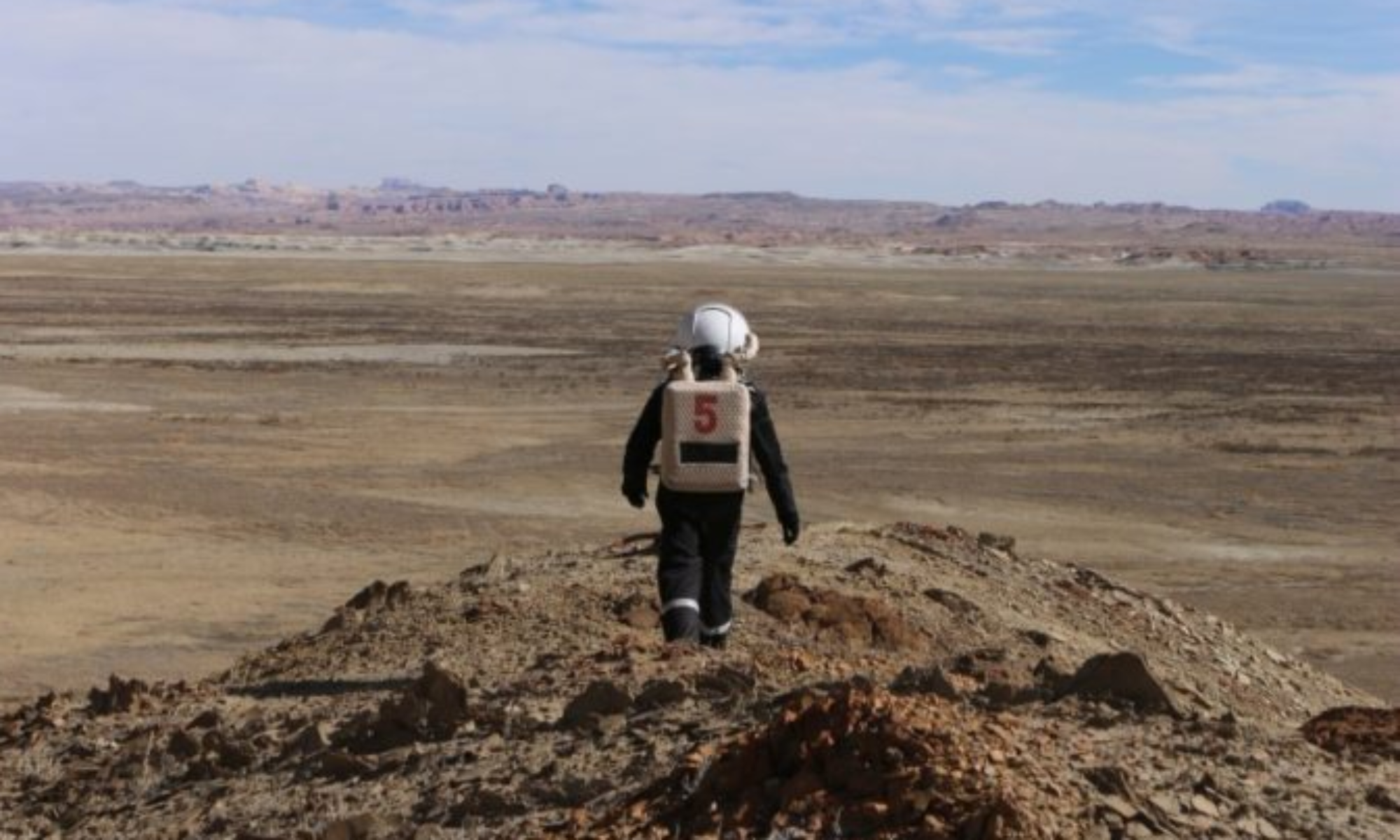
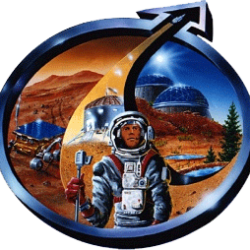
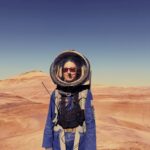
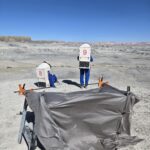
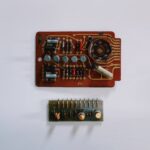
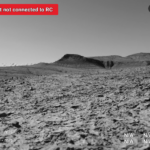
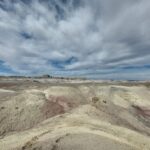
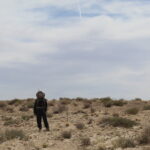
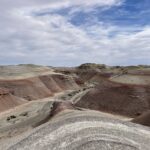
You must be logged in to post a comment.